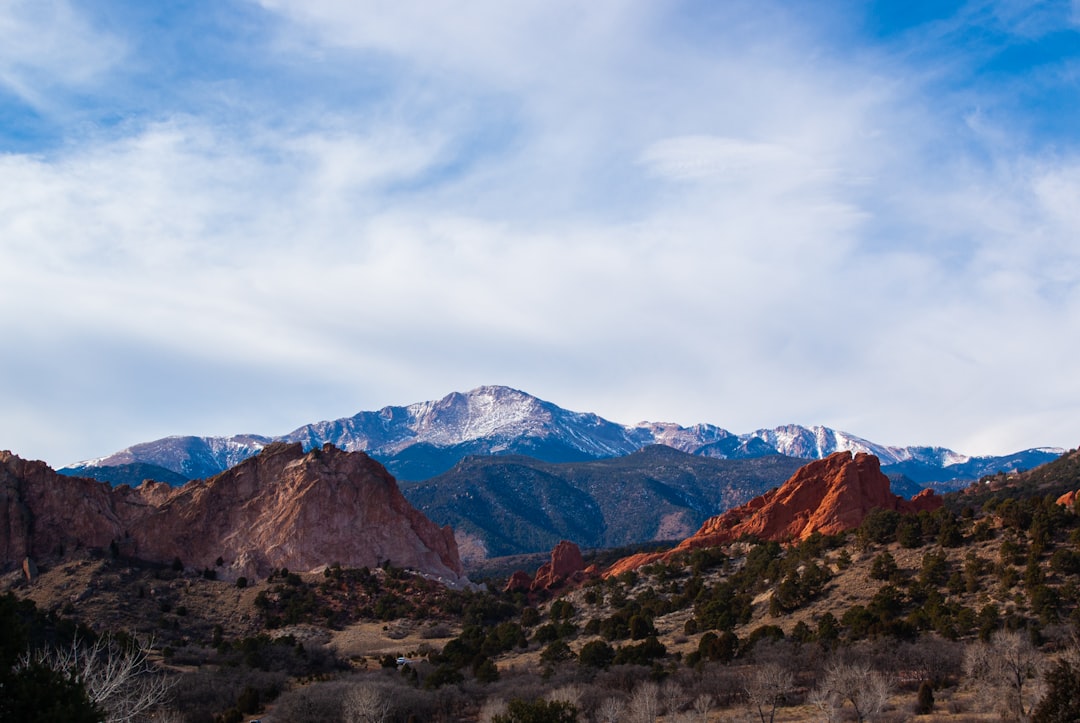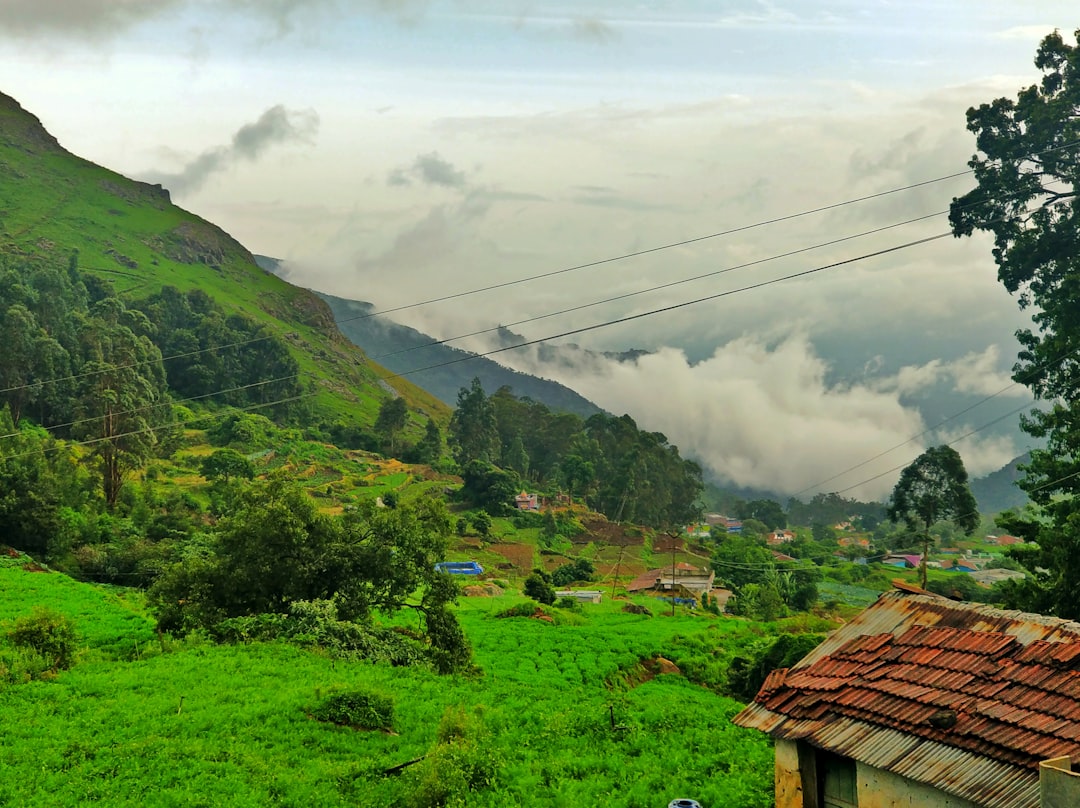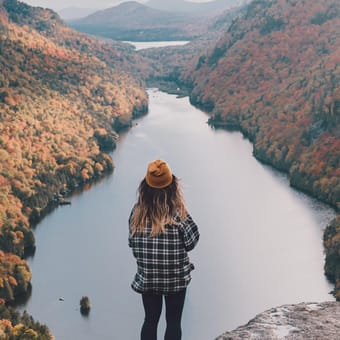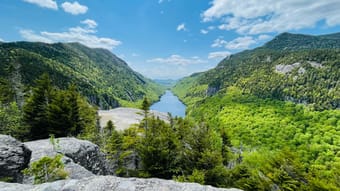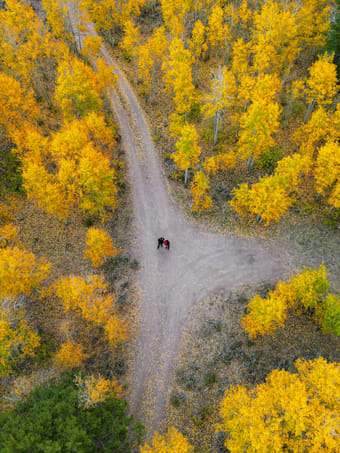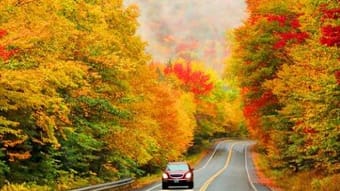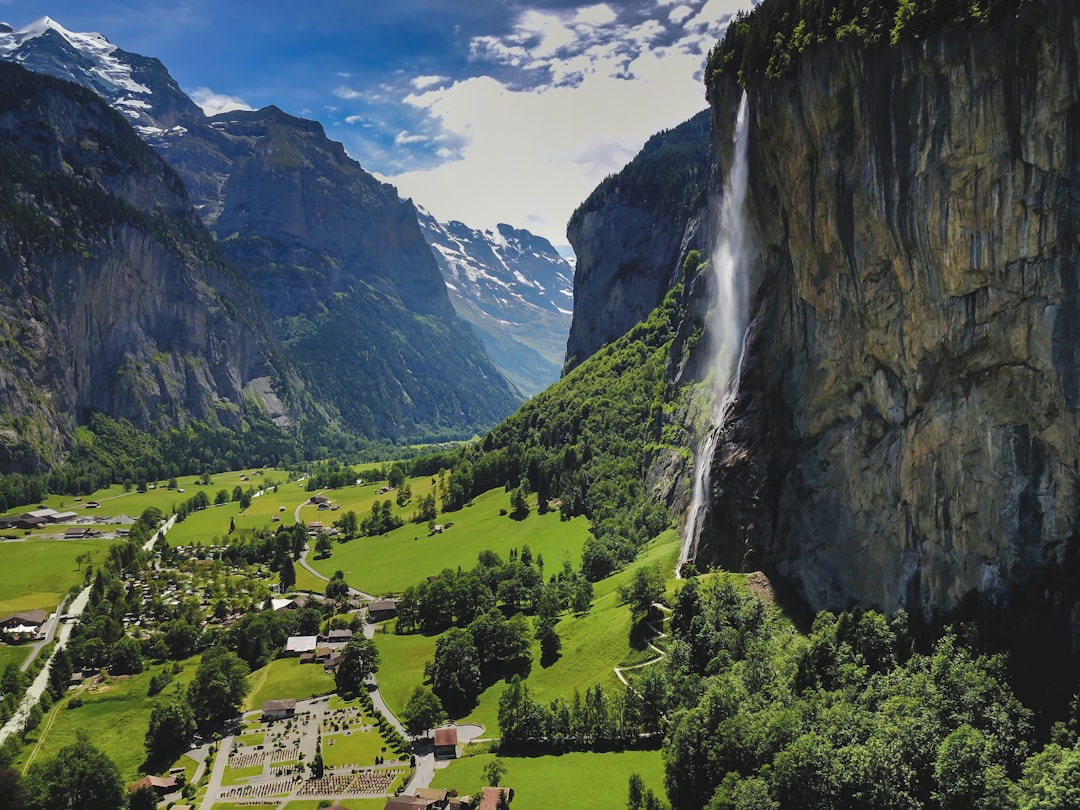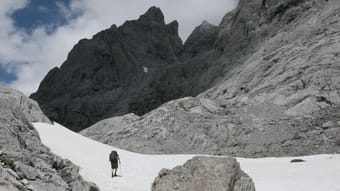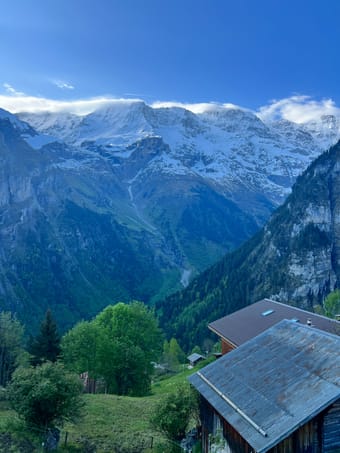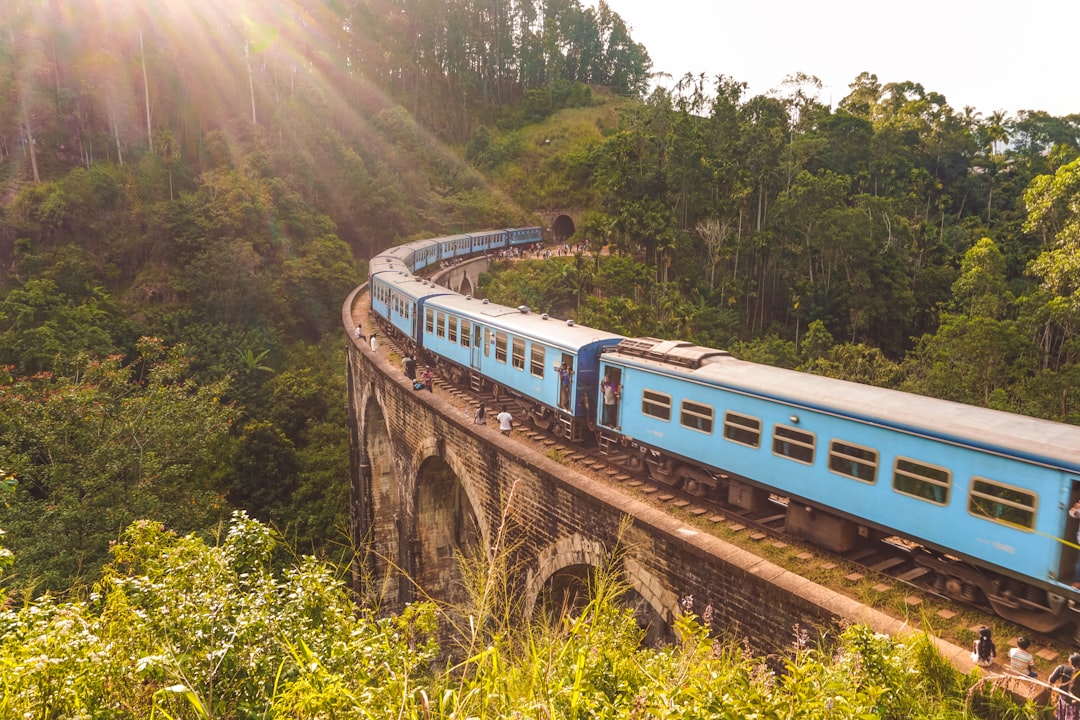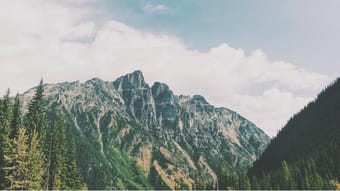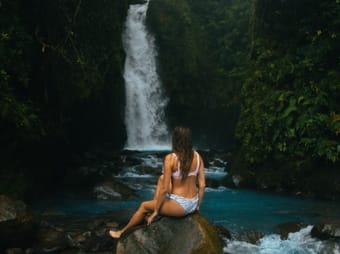Results for Green Mountain Falls
6D/5N Ooty (2N) - Wayanad (2N) - Coorg (1N)
Are you looking for a unique and unforgettable travel experience? Then look no further than this 6-day itinerary to Ooty, Wayanad, and Coorg. This itinerary takes you to three of the most popular hill stations in South India, each with its own unique charm and attractions.
This itinerary is perfect for travelers who are looking for a mix of culture, history, nature, and adventure. You will experience the best of what South India has to offer, from the lush green hills of Ooty to the coffee plantations of Coorg.
Don't miss out on this once-in-a-lifetime opportunity to explore the beauty of South India. Book your trip today!
Adventure • Nature • Photography • Sustainable/Eco • Slow Travel • Road Trip • Van Life • Relaxation
$6.39
$7.99
20% off
7
There is something magical about fall and when the leaves change colors. This guide covers the best places on the East Coast to visit for those cozy fall vibes!
This road trip covers where to stay, where to eat & drink & what to do in Hudson, New York, the Catskills, the Berkshires, Stowe & Woodstock Vermont, the Adirondacks & more!
Expierence the best places to see the fall colors, stay in cozy cabins, eat delicious food, drink fresh cider & more! 🍁
Adventure • Art • Boutique • History • Shopping • Foodie • Design • Nature • People & Culture • Photography • Mountain • Road Trip
$20.00
1
If you are looking to plan the perfect fall foliage roadtrip adventure to Vermont, then this ultimate guide is for you!
I LOVE Fall and as someone who loves a good roadtrip, I put together this guide to share some of my favorite Vermont spots and recommendations for the best things to do, see and eat to help you plan the perfect Autumn trip!
This guide is in both a list form and interactive map, and showcases:
*Local farms to visit
*The BEST places to find cider donuts and fall snacks
*Covered bridges
*Waterfalls, lakes, and scenic spots to explore
*The BEST towns to visit
*Picturesque churches
*Local shops for all things Vermont
*Great coffee shops and quick bites
*Restaurants and bars
*Vermont Visitor Centers
If your fall foliage roadtrip is also taking you to New York State, New York City, and/or New Hampshire, make sure to check out my other guides and itineraries for those areas.
You can also find me on Instagram & TikTok at @adventuressashley for Fall / Autumn trip inspiration and tips!
Adventure • Nature • Road Trip • Van Life • Photography • Coffee • Foodie • Shopping
$20.00
11
Grace Kim l Solo Travel & Adventure Blogger ✨
Available for hire
The Ultimate New England Fall Foliage Guide: 5-Day Full Itinerary 🍁
If you're looking to see Fall Foliage in New England this year, I've put together a full, comprehensive 5-Day Full Itinerary.
This guide includes:
🍁 Best Hikes
🍁 Instagrammable Photo Spots
🍁 Exact Google Coordinates
🍁 Where to stay
🍁 Recommended Restaurants and Cafes
🍁 Gear + Packing List
🍁 Additional Spots
I've spent years exploring all of what New England has to offer during the Fall and I'm so happy to be able to share my full itinerary with my favorite locations with you all.
Get ready to be wow'ed during your trip chasing fall foliage in New England 🍂
Families • Digital Nomads • Backpackers • Solo Female • Couples • Groups • Adventure • Foodie • Budget • Nature • RV • Photography • Van Life • Road Trip • Mountain • Camping
$20.00
7
When I say I am from New York, most people think of the City. But little do people know there is more to New York than just the City. Growing up in Northern New York, I was very fortunate to live so close to the Adirondaks and the Green Mountains of Vermont. And for seven years lived over near Western New York in Rochester. I also lived in Plainfield, NH for 6 months and I lived in Newton, Massachusetts for 3 months. So, I have a vast knowledge of nature around New York State and some of the Northeast, or New England. I hope this gives you some great hikes to check out whenever you venture to the Northeast! I love photography, so the cover photos are taken by yours truly.
Mountain • Adventure • Nature
$14.44
1
The Eastern Sierras during fall foliage season is a vibrant playground for outdoor enthusiasts and nature lovers. As the aspen trees turn golden, the rugged landscapes come alive with color, offering a perfect backdrop for hiking, off-roading, and scenic drives.
This itinerary (with 100+ spots!) takes you through some of the region’s best sights during fall— from iconic trails like the Convict Lake Loop and June Lake Loop viewpoints, to off-the-beaten-path gems like Hope Valley Barn. Along the way, you’ll find cozy accommodations in charming towns like Mammoth Lakes and Bishop, as well as local dining gems that capture the essence of mountain life. Ready for a fall adventure? Let’s dive in!
Unlock this guide for access to:
🥾 Hiking Trails (feat. fall foliage spots)
🍁 Viewpoints & Points of Interest
🛌 Accommodations (lodging + campgrounds)
🍽 Places to eat (breakfast, lunch + dinner options)
❗️ Complimentary future updates
Couples • Family • Groups • Pets • Female Solo • Camping • Budget • Outdoors • Photography • Road Trip • Adventure
$5.89
1
Welcome to Lucerne, Switzerland – where time seems to slow down and every corner holds a new adventure! Get ready to soak in the beauty of this charming city nestled amidst the Swiss Alps 🏔️
In this travel guide, I'll share all the cool spots and hidden gems that Lucerne has to offer. From strolling along the cobblestone streets of Old Town to strolling by the crystal-clear shores of Lake Lucerne, we've got your itinerary covered.
But hey, it's not all about sightseeing – it's about immersing yourself in the local vibe and soaking up the culture. And there’s no better way to do this than trying the local Swiss cuisine, from cheesy fondue to mouthwatering chocolate treats. Trust me, your taste buds will thank you!
And let's not forget about the epic adventures waiting for you in the Swiss countryside! I’ll detail some of the best day trip excursions from Lucerne where you can see the rolling green hills and stunning snow-capped mountains.
This guide includes:
📍Top sites to see in Luzern
🚂 The best scenic train routes
🍽️ Restaurants in Luzern
🏔️ Day Trips from Luzern
🇨🇭Swiss Travel Pass Details
$10.00
0
Welcome to my completely unorganized but oh-so-helpful map of Asheville and Black Mountain! An absolute smorgasbord of my own travels and research, suggestions from friends and strangers, and many treasures found along the way, this is where I compile all things Asheville for my future trips and yours. Things I particularly love that you’ll find a lot of:
☕️ Coffee shops & bakeries
🌮 Local cuisine
🏛️ Museums of all kinds
🌳 Gardens & parks
🛏️ Boutique hotels
🍕 Small regional chains with good reputations
All my guides in this category are $5 per 100 places included, but since I add to these constantly, you can lock down the lowest price today and gain a lifetime access!
Couples • Family • Architecture • Art • Budget • History • Foodie • Coffee • People & Culture
$5.00
2
A round trip 8 day route from Boston exploring New Hampshire, Vermont, & Maine. There are lots of stops and scenic sights to enjoy the natural beauty in early fall! This is a moderate paced itinerary which I would recommend spending
Leaf-peeping has become super popular and lots of the charming boutique B&Bs book out quickly because they are small. A few of the areas book out completely by mid-January. I would book no later than February.
There are also many foliage maps which will help you determine when is best to plan your trip. It is not an exact science as many things affect the exact timing of "peak" including rain fall, temperature, and more. This is my favorite map for New England: https://newengland.com/foliage/foliage/peak-fall-foliage-map/
Couples • Female Solo • 50+ • Family • Boutique • Outdoors • Adventure • Coffee • Road Trip
$35.00
0
2024 Edition
We combined in an efficient way the must- see places of Switzerland while taking full advantage of the Swiss Travel Pass. You will experience the Glacier Express, Zermatt, the Jungfrau and Interlaken region, Lucerne and Zürich.
This itinerary is made expressly for the spring, summer and fall.
Adventure • Nature • Mountain
$25.00
4.4
(17)
374
2024 Edition
8-Day Itinerary to discover Switzerland with its amazing panoramic trains. You will see Lucerne, Interlaken, Montreux, Zermatt and St Moritz. You will ride the famous Glacier Express, the GoldenPass line, and experience breathtaking mountain trains and gondolas.
This itinerary is made for spring, summer and fall seasons.
$25.00
4.2
(5)
75
Australia is the worlds sixth largest country so their is a lot to explore! Landscapes, wildlife and nature ranges from mountains to rainforests and desert to coral reefs.
Are you thinking of driving through the Aussie Outback? If you've driven the East Coast and craving a new adventure but not sure which route to take, where to stay, what to see, this 32 day road trip guide will take you through our experience. Whether you are a 4WD junkie or you just have your reliable city car, this route will demonstrate accessibility day to day so you can determine which way you want to explore next.
This guide features:
- Day by day road trip guide
- Detailed description of accommodation including, prices, pros and cons, distances between each stop, accessibility etc
- Written directly from the person who experienced it themselves
- Where we went wrong and take on board our highlights so you can have the best adventure possible!
- Interactive map demonstrating where mentioned stops are located
- Over 80 places to experience, adventure, relax and enjoy
- What to expect on Australias 'worst road' over 300ks
- How to prepare for a remote trip to the Aussie outback
Join the adventure around Australia on
Instagram; @lappin_theworld
TikTok; @lappin_theworld
Backpackers • Adventure • Nature • Overlanding • Slow Travel • Photography • Road Trip • Camping
$20.00
4
Seven-day trek based in refugios.
INTRODUCTION
The Picos de Europa is a region of limestone peaks reaching over 2500 metres above sea level; the highest being Torre de Cerredo at 2650 metres. The route described here is one that I hiked alone in early summer. The best time to tackle the route is between June and September. There is more likely to be snow on the high passes in early June but they are usually not to difficult to negotiate.
The Picos de Europa is not as well known as the Pyrenees or Alps and as such the hiker traffic is less and the tourist infrastructure is less developed. This makes the area feel less spoilt but it can also make it a more challenging area to explore with fewer trails and little to no signposting. Always take a map with you: the Editorial Alpina 1:25,000 maps are the best. I took these and also used the outdooractive app and downloaded the relevant map tiles. This is useful for pinpointing where you are, in what can be confusing terrain. I was lucky to have clear weather for my entire trek but I would imagine that it's pretty difficult to navigate when the cloud is down on the mountains so take a compass too.
You can stay in refugios every night on this hike and wild camping is permitted above 1500m; details below.
I can't recommend the Picos de Europa as a hiking destination enough. The mountains are magnificent but there are also beautiful extensive woodlands at lower altitudes, as well as meadows full of wildflowers and butterflies. The juxtaposition between the stark limestone peaks and the gentle greenery of the valleys is beguiling.
DISCLAIMER: Please note that hiking in the Picos de Europa is not risk free. It is a very challenging area in which to hike. I accept no responsibility for any accidents you may experience while hiking this route. You are responsible for your own safety. Some of the dangers and difficulties are listed a little further down this guide.
HOW BUSY?
Unlike some of the more well know hikes around Europe this trail is less well trodden and as such the trail can be quite hard to follow at times, and at other times there is no trail! Despite this, refugios, being small, fill up fast (see below).
REFUGIOS
The hike is made easier if you stay in the staffed refugios where you can recharge your metaphorical batteries. Accommodation at these mountain huts is in communal dormitories and you will need to bring your own sleeping bag. It's best to book ahead as they are often full throughout the summer. Prices are around the €12-17 mark and they also do affordable meals (breakfast, picnic lunch and dinner).
There is also a handful of unstaffed, very basic mountain shelters with no services and no beds but these can be a good option in an emergency. Most of the refugios only accept cash so be sure to take plenty with you before you set off as there are no ATMs! All the refugios on the route are listed in the route description below with website links.
WILD CAMPING
Camping is only permitted at 1500m above sea level or higher. There is not much water anywhere above this altitude so be sure to fill up when you get the chance (at refugios) before camping in a remote spot.
POSADA DE VALDEON
This beautiful village tucked in the valley between the Macizo Central and Macizo Occidental is a lovely place to wander for a few hours. At the centre of the village there are a number of restaurants and bars and a small square with a water fountain. If you need somewhere to stay before or after the trek you'll find hotels, guest houses and a youth hostel. There is a hotel recommendation and link in the route description.
In the centre of the village is a pharmacy should you need any blister plasters! And on the road to the west of the village is the National Park office where you can find information about hiking and anything else to do with the national park.
GETTING THERE
From the UK there are Ryanair flights to Oviedo (Asturias airport) from London Stansted. A bit further afield you can get flights to Bilbao and Santander from the UK and the rest of Europe. Getting from the airport is a little complicated but there are buses to Posada de Valdeón from Oviedo changing in Cangas de Onis. The journey takes about 4.5hrs. There are also buses from Santander and Bilbao changing in Llanes and Riaño with the journey taking around 15hrs from Bilbao.
An easier but more expensive option is to get a taxi. You could also hire a car but of course you will have to leave the car sitting idle in Posada de Valdeón while you do the hike.
FLORA & FAUNA
This area of northern Spain is fantastic for wildlife. At lower elevations the beech and sessile oak woodland stretches for miles over rolling hills. This is part of the boreal forest that once would have covered much of Europe and is home to roe deer, wild boar, red squirrels, pine martens and brown bears.
In the skies you have a good chance of seeing griffon vultures, golden, booted and short-toed eagles, black kites and peregrines. Of the smaller passerine species the Picos are home to red-backed shrikes, black redstarts, spotted flycatchers and black woodpeckers.
But it's the wildflowers in the meadows and on the woodland edges that are the real joy and most easily appreciated. Vetches, cinquefoils and orchids create a colourful patchwork of colours with butterflies bringing the whole scene to life. Look out for swallowtails, fritillaries and hairstreaks.
NAVIGATION
Navigation is difficult as the terrain can be confusing and in many places there is no trail whatsoever. Take a map (1:25K Editiorial Alpina maps are the best), compass and GPS and know how to use them. It's also a good idea to download the map on a relevant map app. I used the outdooractive app but others are available.
WEATHER
Thunderstorms are common, usually in the afternoon and these can be particularly dangerous high up in the mountains. It's best to hike early and get to a refugio by lunchtime if there are afternoon thunderstorms in the forecast. The weather in this part of Spain is very changeable as it has a maritime climate. Rain and thick fog are possible but equally long periods of warm sunshine are not unusual. The best advice I can offer is to be prepared for anything. Pack suncream and a sunhat but don't forget your waterproofs either.
FALLING ROCKS
Rock falls are not unusual as chamois and other hikers can dislodge rocks above you. Getting caught in a rockfall is not so common but not impossible. Be aware and if you see rocks heading your way, and cannot find cover, crouch down on the floor and pull your rucksack over your head and back.
DRINKING WATER
There is very little running water as these mountains are mostly comprised of permeable limestone. You will need to take plenty of water with you each day (I packed three litres every day and usually drank it all). You can fill up at the refugios and there are a few fountains / fuentes although most of the ones I saw marked on the Editorial Alpina map were dry when I found them.
THE SUN
Sunburn and sunstroke are both real dangers and there is little shade. Keep hydrated and wear a sun hat that covers your neck.
TERRAIN
In some places you need to scramble up steep rocky sections. You will need to have experience in this kind of terrain and have a head for heights! The terrain is very rocky and uneven at higher altitudes so you will need strong, sturdy footwear. Trekking poles are also invaluable in providing support and helping you across and up awkward sections. There is also a lot of steep ascent and descent on this route so you will need to be reasonably fit.
DANGEROUS ANIMALS
On many parts of the trail you will encounter cows. In my experience they are very docile and used to trekkers so they shouldn't be of any concern. You may also find flocks of sheep and while these aren't dangerous they are often accompanied by shepherd dogs which have been trained to keep intruders away from the flock. They can be quite intimidating when they start barking at you. If you see sheep ahead it is best to give them a wide berth, even if this means veering away from the trail for a while. If you walk directly towards or through a flock of sheep you risk agitating the shepherd dogs.
Bears are not common in the Picos de Europa but there are bears in other parts of the Cantabrian Mountains, notably Somiedo National Park, not far to the west, and there is always the possibility of seeing an itinerant bear wandering through the Picos. Eurasian brown bears are not as big nor aggressive as the grizzly bears of North America so you shouldn't worry too much about an encounter. It's extremely unlikely you will see one so if you do, consider yourself very lucky.
Wild boar are common in the woodlands at lower altitudes. They are not as aggressive as some people will tell you and tend to be nocturnal. I did see some in the daytime near Vegabaño. As soon as they saw me they ran away, crashing through the undergrowth. As with any large animal it's best to simply give them plenty of space to move away from you.
I hope none of this advice puts you off hiking in the Picos de Europa. Yes, it's a challenging mountain area but the rewards for hiking here are great. Enjoy the hike!
Adventure • Nature • Slow Travel • Sustainable/Eco • Mountain • Camping
$12.00
3
Have you ever seen a landscape so unreal, it felt like looking at a green screen?
Explore the breathtaking hiking trails and natural wonders of Lauterbrunnen, Switzerland. Discover towering waterfalls, majestic mountains, and picturesque alpine landscapes in this outdoor enthusiast's paradise.
Backpacker • Car-free • Digital Nomads • Groups • Couples • Family • Female Solo • Adventure • Camping • Outdoors • People & Culture • Overlanding • Photography • Relaxation • Slow Travel • Sustainable/Eco • Wellness
Free
1
This Wild Soul - Alice
Available for hire
Your ESSENTIAL guide to ELLA, Sri Lanka! Where to stay and what to do!
Ella is a picturesque town surrounded by mountains and valleys. It’s a hub for a wide range of activities in Sri Lanka and because of it’s higher elevation it remains warm but comfortable year round and offers some respite from the rest of the country which can get stiflingly hot in season, or see a lot of rain out of season. Almost every person I met travelling in Sri Lanka remarked Ella was their favourite place they visited during their trip and I have to say it was also mine.
The temperate weather makes Ella a great place to do lots of activities each day -you can go hiking, enjoy one of the most beautiful train journeys in the world, view Nine Arch Bridge, swim in waterfalls, go caving and swim in underground cave pools, take yoga classes, cooking classes, visit temples, and venture a little further for safaris.
It’s an ideal spring board between Colombo and the South/East Coast and Yala National Park.
The best way to arrive in Ella is by train from Kandy or Nuwara Eliya, but as one of the most beautiful train journey's in the world, you will need to book your train tickets in advance... my advice is to go for 2nd class- find out why, and how to book them in the "What To Do" section of this guide.
Read on for all my recommendations on where to stay, what to do and where to eat for a FABULOUS time in Ella!
Nature • Adventure • Wellness • Photography • Mountain • Relaxation • Boutique • Budget • Luxury
Free
12
Umbria is in THE GREEN heart of Italy 💚 and it has sooo much to offer and sooo much to discover.
In this guide, you will find a list of 10 of the most beautiful natural landmarks & sites this region offers ⛰️🚣🏻♀️🌅🌳🏞️
For each one of them, you will have a description of:
🤔 What it is
👀 What there is to see and visit there
🚶🏻♀️ What you can do there. All the cool activities
ℹ️ General but important information to make your trip easier.
Adventure • Luxury • Budget • Foodie • History • Nature • Faith • People & Culture • Romantic • Sustainable/Eco • Slow Travel • Photography • Van Life • Road Trip • Wine • Mountain • Camping • Relaxation
$8.00
4
Sharing my personal list of 200 local spots in over 23 Kootenay communities! The Kootenay region is a haven for anyone seeking recreation and relaxation, who wants something a tad quieter than Banff and Canmore. Located just West of the Southern Canadian Rockies, the Kootenays have charming small towns, jaw-dropping landscapes, friendly people, a relaxed energy and more trails than one could possible explore in a lifetime.
As a local who lives here, and has travelled throughout the East and West Kootenays, there are so many incredible places/things/spots/shops in this region that deserve the same hype as their Alberta mountain town neighbours. The Kootenay's are just as cool (but quieter and more affordable)!
Included in my list of 200 favourite local Kootenay spots, you'll find..
- Local Coffee Shops
- Local Shops & Specialty Stores
- Local Accommodations
- Local Restaurants & Cafes
- Local activities, trails and must see's*
⭐️ = My #1 must see in the community!
Everywhere listed in the guide is a place I have personally been, or a place that I have on my list to visit as quickly as possible (but that I know other locals visit and love).
* All the trails, activities and recreation recommendations are beginner/family friendly, no multi-day or difficult hikes here. If you're really into a specific sport, this guide will really help shape the rest of your trip to the area outside of your hike/ride/skiing.
The Kootenays are a true paradise for outdoor enthusiasts, active families and nature lovers - an incredible destination to explore for all.
Couples • Family • Groups • Female Solo • LGBTQ+ • Digital Nomads • Pets • Vegetarian • 50+ • Adventure • Coffee • Outdoors • History • People & Culture • Road Trip
$10.00
1
This 10 day itinerary and adventure guide to Costa Rica is the result of over 1 month spent exploring the country, dozens of hours of planning, and my in-person experience. It covers 3 regions of Costa Rica: La Fortuna, Santa Teresa, and Dominical/Uvita. These areas include a variety of waterfalls, hot springs, hikes, wildlife, beaches and much more which is why I decided to focus on these 3 specifically!
The guide includes an fun features such as an interactive map, directions that connect directly to your phone’s Google or Apple Maps app, and the exact coordinates to some of my favorite hidden gems & activities.
It lays out instructions to help you plan your perfect trip to this area including over 35 accommodation suggestions plus where I stayed myself, 13 waterfall locations, 4 hot springs experiences, 4 hiking destinations, 7 beautiful beaches, boat tours & island day trips, direct links to every resource you could need, exclusive photos and videos from me, and so much more! It’s mobile friendly when you download the Thatch App for free so you can easily access all of the info right from your phone!
While the guide is laid out in a 10-day trip itinerary format, its designed to allow you the flexibility to pick what order you’d like to travel to each destination and choose what you want to do each day. It can easily be adjust for a shorter trip!
I have hand-crafted this guide specifically for adventure travelers (like me!) and feel so confident you will have an amazing trip with this guide by your side 😏 As a part of your purchase of the guide, here are a few promises I can make you:
1. This is a LIVING guide: I will update it as I find more information and discover more places which means you have lifetime access to all updated information as it’s added!
2. I only make guides based on areas I have not only been to but know well! I have spent over 4 weeks exploring Costa Rica in order to narrow down the destinations & experiences I share in this guide. I include both activities that I have done myself as well as those that are on my bucketlist for next time I visit! I will always call out the ones I have not done yet and provide you the exact resources you need to experience them yourself!
3. These guides are completely transparent! You can be sure that all unfiltered opinions I provide are my own 🙃 If I include any sponsored information or affiliate links, I will be sure to call these out directly. I will only include these if they benefit you (such as a discount code or coupon!)
Finally, this is the first time that I am releasing one of my photo presets!!! The preset comes for free included with this guide so you can edit all of your trip photos with that Costa Rica vibe - think rich blues, deep forest greens, and just a touch of grain. These are exclusively for my travel guides as I do not nor have I ever sold them anywhere else!
This guide truly is everything you need to plan your entire trip all in one place. I can’t wait to hear & see your adventure! Feel free to send me a DM with your feedback & tag me in your photos! @katbennettphoto
Adventure • Nature • Road Trip • Beach • Mountain • Photography
$28.00
34
Ask ThatchGPT
